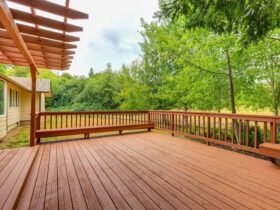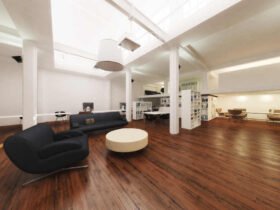When planning to renovate your existing kitchen or want to construct a new one, an important element that you should never overlook is the cabinetry. Even if you are sure about how you want your dream kitchen to appear, unlocking the maximum potential of kitchen cabinets can be quite a task. So, to make the best move you need to design the cabinets to perfection.
This is where a crucial question arises: how to design remarkable cabinets that not only look great but meet your storage requirements too? The answer to this question only lies here, as this article reveals the tips & tricks to follow when you are reorganizing or re-modeling the cabinets of your kitchen.
Step-By-Step Guide to The Best Kitchen Cabinets
There are four steps that should be taken to determine what kind of kitchen cabinets would be suitable for your kitchen and these are:
Step 1: Know Your Storage Needs
Before deciding which type of cabinet to choose, work on every aspect of the kitchen and notice what exactly bothers you.
- Under-utilize the corner cabinets are wastage.
- Having to bend and search for things stored in the base cabinets.
- It seems impossible to find things easily in your pantry.
- Rummaging in and around the drawers to find items that you need becomes irritating.
These are some of the common complaints that people have about their kitchen. Well, modern kitchen designs resolve the issues in a remarkable way. Plus, with the right cabinetry, you can transform the kitchen into an enjoyable space.
Step 2: Use Maximum Space
Most of the kitchens do have a lot of unused space. Taking this into account, incorporate designs that bring out the best from every inch. To do this, measure the area where you want to install cabinets, check the latest trends & innovative designs and then focus on how these can add to the utility and convenience of your kitchen. Here, always have a practical approach when considering the space for the design of kitchen cabinets.
At the end of the day, keep the cabinetry, island, and countertop simple and lined up in design, as such an alignment will make the room appear longer because there won’t be too many visual interruptions.
Step 3: Harness The Power Of Upper Cabinets
Traditional upper cabinets have two opening shelves along with a bank of doors. If you store your bowls and plates in the upper shelves, then you’ll probably be left behind with a lot of space to store many other things. Instead of sticking to the basics, opt for smart upper cabinets that will help you organize your kitchen effectively. For example, a pull-down spice rack- storing spices in the front shelf would consume a lot of space.
Step 4: Focus on Lighting of Kitchen Cabinets
Having the best kitchen cabinets for your home would be of no use if it is shrouded in the darkness. Thus, another major component that you must focus on is the lighting. With opulent cabinet lights, you will be able to provide a much-needed oomph to the place and even find the things that you are looking for easily. This saves you from the drastic black-hole effect, which most of the people experience when they open a dark pantry.
When you are done with the design, the last step will be to hire a skilled and dedicated professional who would breathe life into your ideas. A trusted source should always be preferred because designing requires a lot of money. In addition, the professional will also come up with suggestions to help you create amazing kitchen cabinets.
Maintaining Your Cabinets for Maximum Storage Efficiency: Tips for Long-Term Organization
Designing your kitchen cabinets for maximum storage efficiency is essential for creating a functional and organized kitchen. It involves assessing your storage needs, evaluating your current storage space, and considering your cooking habits. By understanding your unique needs, you can choose the right storage solutions, such as pull-out drawers, adjustable shelves, and lazy susans, to maximize your available space. Proper maintenance, including regular cleaning and decluttering, can also help prevent overcrowding and maintain long-term organization. Additionally, utilizing vertical space, such as installing taller cabinets or hanging pot racks, can create more storage space.
Lighting can also play a role in optimizing your cabinet space, as under-cabinet lighting can make it easier to find items. With a well-designed and organized kitchen, meal prep and cooking can become more efficient and enjoyable. By designing your kitchen cabinets with efficiency in mind, you can create a kitchen that is both stylish and functional, while maximizing your available storage space.
Once you’ve organized your kitchen cabinets, it’s important to maintain them to ensure maximum storage efficiency. Here are some tips for keeping your cabinets organized over the long term:
Clean Regularly
Regular cleaning is essential for maintaining your cabinets. Wipe down shelves and drawers on a weekly basis to keep them free of dust and debris. If spills or stains occur, clean them up immediately to prevent damage to your cabinets.
Declutter Seasonally
Decluttering your cabinets on a seasonal basis can help prevent clutter from building up over time. Take stock of your kitchen items and get rid of anything you no longer use or need. This will create more space and make it easier to find what you’re looking for.
Keep Items in Their Designated Spaces
Keeping items in their designated spaces is key for maintaining an organized cabinet. After using an item, make sure to put it back where it belongs. This will prevent items from becoming misplaced and make it easier to find what you need in the future.
Avoid Overcrowding
Overcrowding your cabinets can lead to disorganization and make it harder to find what you need. Avoid stacking items on top of each other and leave some empty space in each cabinet to allow for easy access and organization.
By following these tips, you can maintain your cabinets for maximum storage efficiency and keep your kitchen organized and functional over the long term.








Find Us on Socials